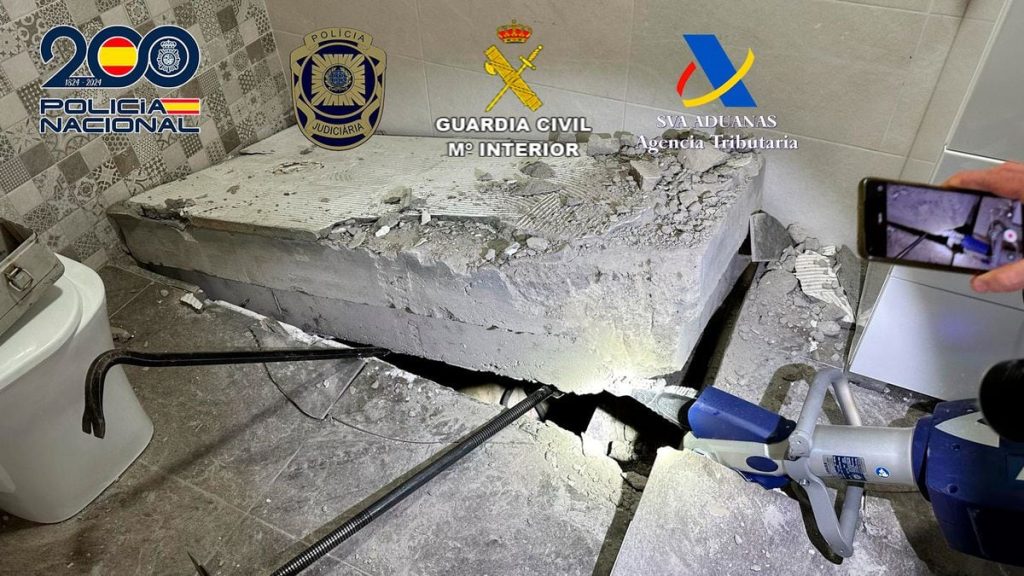Francisco El Piraña and his partners, brothers Miguel Ángel and Rafael from the Río Piedra clan, aspired to more than any drug trafficker in the Strait of Gibraltar. Their ostentatious mansions at the mouth of the Guadalquivir River, high-end cars, and trips to Dubai weren’t enough. So they decided to move to an affluent neighborhood in Lisbon from where they could run the powerful mafia that trafficked hashish and cocaine from the Bay of Cadiz while remaining under the radar. Their roots here were so strong that, during one of their visits to their homeland, they ended up being arrested in a large-scale operation that has already resulted in 31 arrests.
All of them are accused of being part of a mafia specialized in transporting drugs for others using a fleet of speedboats always kept at sea. They boasted about having connections with Moroccans living in Marbella and Galician cocaine traffickers and were able to maintain relentless activity. In addition to the indulgence of the top bosses moving to live in Lisbon, the power of the organization is evident in the 1.4 million euros in cash that authorities have seized in various raids and the network of fishing-related companies and dealerships that investigators believe were used for money laundering.
The suspects hid bundles of banknotes in a kitchen extractor hood, carried pistols with gold buttstocks, and owned 19 high-end cars, as well as five speedboats—two in Portugal and three in Spain—now seized, among other assets, in the 24 raids. The 19 detainees, 15 of them in Cadiz, are expected to appear before the Court Number 3 in Sanlúcar. In the end, the luxury retreat to Lisbon didn’t do much for the Guadalquivir drug traffickers who wanted more luxury. “They were calm, they didn’t see us coming,” states one of the investigators.
The noose around El Piraña and the Río Piedra brothers began to tighten just a year ago but didn’t reach its operational culmination until this past Monday when the last 19 suspects were arrested, joining 12 already in prison. Over 250 agents from the National Police, Civil Guard, and Customs Surveillance—coordinated by the Anti-Drug Prosecutor’s Office in Jerez and Court 3 in Sanlúcar de Barrameda (Cadiz)—deployed in collaboration with the Portuguese Judicial Police during an operation that led to the identification of the main leaders of the mafia. “It’s a milestone in the Bay of Cadiz that will make an impact. There was no one above them in the area,” a police source points out.
The organization led by Francisco El Piraña, Miguel Ángel, and Rafael from the Río Piedra clan had a fleet of between eight and ten semi-rigid boats, known as speedboats, that were always in the water with their respective crews to carry out drug transports, whether cocaine or hashish. They had contacts with other national or international organizations that demanded their services and had a network of small boats and fishing vessels that provided gasoline and supplies to the speedboats. The first investigations into the gang began when they tried to collect a shipment of 6,000 kilos of cocaine from a narco-submarine coming from South America that ended up sinking.
In Portugal, they also met their logistical needs, as speedboats are not yet a prohibited item in the country. Additionally, the mafia spared no expense in technology and communication systems. Thanks to this, they were able to carry out a frenetic activity of drug trafficking that, over the course of this year, led investigators to seize 4,000 kilos of hashish and 627 kilos of cocaine. The latter shipment corresponds to the drugs that a speedboat dumped off the coast of Matalascañas last week when they were being pursued by authorities. This is not the only intervention that could be linked to this case. “There are cases scattered around the area that will fall here. Now we’ll have to request cases from four or five courts,” predicts a judicial source close to the investigations.















